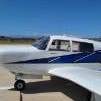Discussion on the Continental engine in the 231
-
Members Online
- eman1200
- Hank
- PeytonM
- takair
- BrianL29
- N201MKTurbo
- hammdo
- hubcap
- pkellercfii
- IvanP
- Mdillard
- Slick Nick
- rklems
- LANCECASPER
- MDMooney
- pirate
- MikeOH
- M20R
- Chris B
- MooneyMurph
- Pixleyad
- Fix
- Skyland
- C.J.
- cliffy
- DXB
- M20F
- ElkoRandy20J
- redbaron1982
- AME
- Mooney in Oz
- Fly Boomer
- Lax291
- Cfidave
- Sabremech
- Vulcan81
- AustinAir
- lamont337
- Shadrach


Recommended Posts